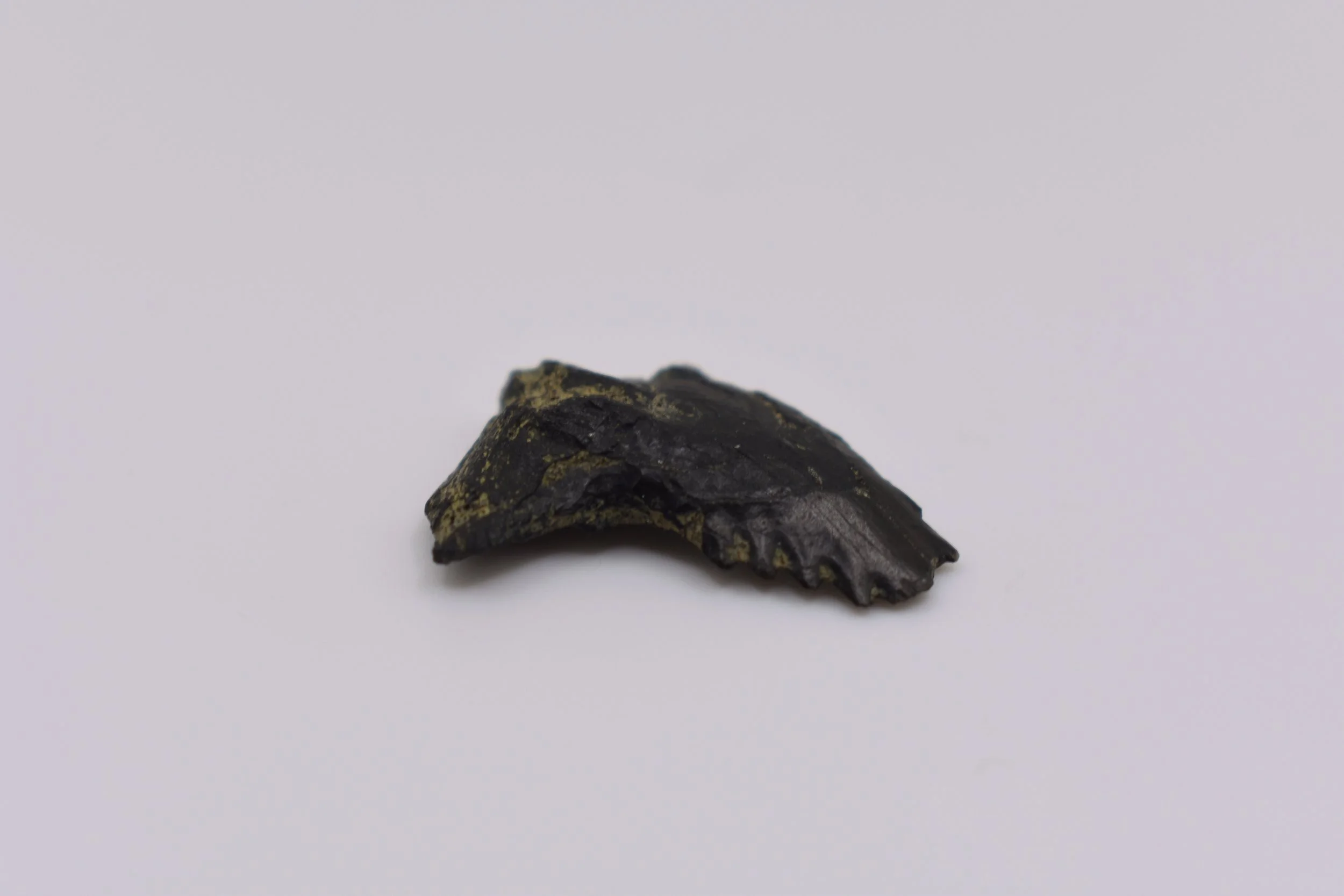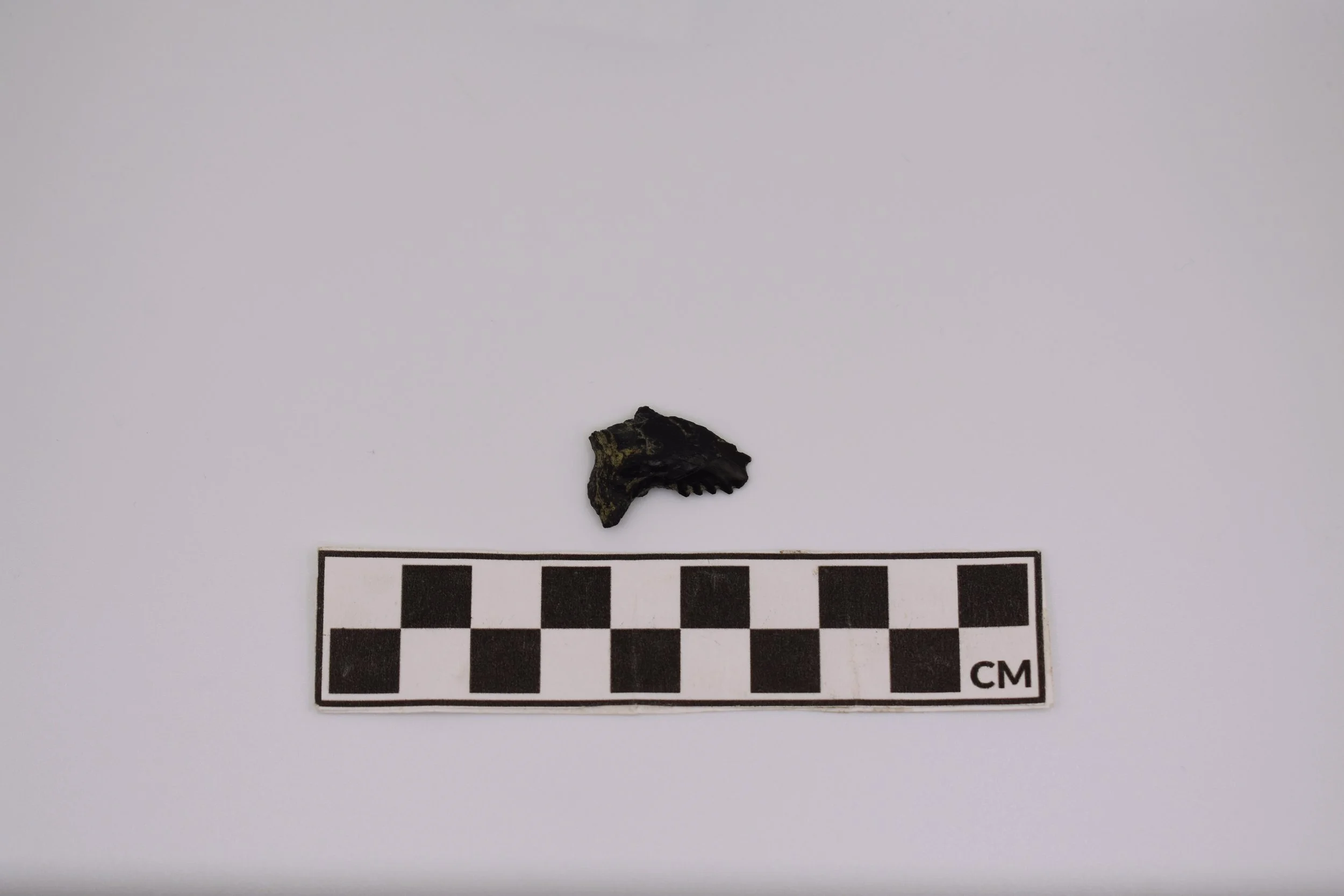Marine Paleontology: H. Curvatus
In our recent project, we recovered a Hemipristis Curvatus fossilized tooth (Eocene 55.8 - 33.8 million years ago) belonging to the Hemigaleidae family (weasel shark family). An extant species is known to exist in Eastern parts of the world today. Morphology of the tooth’s serrated edge, dentition of the root structure, straight trunk, as well as its extensive mineralization indicate progressed age of the fossil (<10,000 years) and species typology. Species in South Carolina possibly represented by this fossil morphology fall into several distinct families:
Hemigaleidae
a. Hemipristis Serra (Oligocene - Pliocene; 33.9 - 5.2 million years ago)
b. Hemipristis Curvatus (Eocene; 55.8 - 33.8 million years ago)
Otodus (Carcharocles)
a. Otodus (Carcharocles) Megalodon (Miocene - Pliocene; 23 - 3.6 million years ago)
b. Otodus (Carcharocles) angustidens (Eocene - Miocene; 34 - 21 million years ago)
Lamnidae
a. Carcharodon Carcharias (Miocene; 7 million years ago - Present)
Galeocerdonidae
a. Galeocerdo aduncus (Oligocene - Miocene; 33.9 - 13.8 million years ago)
Although bearing characteristics of the Otodus and Lamnidae families with a serrated edge and straight trunk, the fossil’s extensive mineralization and considerably small size (Thickness: 5.30 mm; Weight: <1 g; Length: 2.1 cm; Width: 1.8 cm) rule these families out as a represented species in this fossil. Carcharodon Carcharias teeth measure in at 7.5 cm in length while Otodus (Carcharocles) Megalodon and Otodus (Carcharocles) angustidens teeth measure in at 7.5 and 4 inches in length respectively. Galeocerdo aduncus from the Galeocerdonidae family shares similarities in serrated patterns and spacing along the tooth edge, however, this species of shark is known for its distinct angular trunk. The species represented in this fossil more closely resembles Hemipristis Serra which has previously been documented in the fossil record for South Carolina. Morphology of the tooth’s serrated edge, dentition of the root structure, and straight trunk are characteristic of H. Serra, however, the teeth of this species reach up to 1.7 inches (4.3 cm) in length. Given this fossil’s size, morphology, and the extent of mineralization, it is indicative of the earlier Hemigaleidae species Hemipristis Curvatus (Eocene; 55.8 - 33.8 million years ago), which had teeth measuring in at 1.12 inches (2.8 cm).


